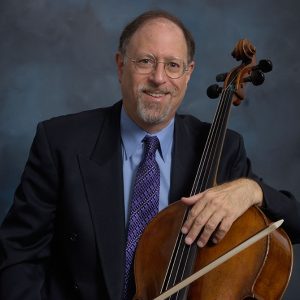
The Joy of Feuillard – A Sequential Approach to Teaching Bow Technique (Part 26 – Feuillard No. 35 – Variations #10-25)
Robert Jesselson
Today’s Blog continues to explore the staccato and legato strokes over three strings, with 16 variations that coordinate these horizontal and vertical motions.
Variations #10 – #13




I asked Zach to play the entire variations #10 and #11 with four repetitions to make sure that he was concentrating well. But then with Variation #12 I asked him to just do two repetitions in order to save some time in the lesson. Once the students have reached the point that they are concentrating well, and playing with more consistent accuracy, I usually ask them to cut some of the variations in half in order to save some time in the lessons. That will be the pattern in future lessons: doing a few variations full value, and then cutting them in half for a few.
Variations #11 and #12 are tricky because they start with the middle string, and this can be confusing. I liked Zach’s solution to the problem in #11.
Variations #14 – #17:




Continuing with staccato strokes and string crossings, I am editing this next video to show only the first part of each variation here – but Zach played each one of the variations completely in the lesson. Once again, I feel that it is important for the students to experience and practice the kind of concentration needed in a “performance” situation.
Variation #17 should again be done two different ways (similar to #8 and the earlier variations): Up-bow staccato and Flying Spiccato.
Variation #18:

Two of the issues that we encounter as cellists and musicians involve the “C-words”: Concentration and Consistency. Learning to concentrate while playing is difficult, and requires training. Like any other skill we need to figure out how to enhance our ability to concentrate. There are lots of ways to approach this, including Zen exercises, Yoga, and breathing. We also work on building the amount of time that we can focus from just a few seconds, to several minutes, to the length of time required to play the Dvorak concerto, and beyond. Another important aspect of learning technique is finding consistency. Again, we have to discover ways to play with a consistent sound and consistently good intonation.
During this recording Zach worked on both of these issues and had to repeat the variation several times. The issues here are consistency in the sound of the staccato stroke (“catch and float”), and concentration for memory. It took a few “takes” to get a good performance of #18, and at the end I asked him again about the two “C” words which he is aware he needs to improve.
Variation #19 – #23:





These variations continue with the same issues as the preceding ones. Variations #20 and #23 should again be performed both as a hooked staccato and a flying spiccato stroke. With the flying spiccato stroke I asked Zach to “challenge” himself by going faster.
You can see with these variations how Zach has by now internalized the twist motion that we started working on several weeks ago. By constant reminders, and good practicing, he is now doing the twist motion “naturally”. Of course it is a learned behavior, that was reinforced with all the different variations. As a result he is releasing more tension and is able to vibrate more consistently. It is interesting to look back at some of the earlier videos to see and hear the differences in his playing.
Starting with Variation #21 here Zach again played only two beats for every chord rather than four beats in order to save a bit of time in the lesson.
Variations #24 and #25:


These two variations are to be played legato. One of the issues is to make sure that the upper arm is really doing the string crossings, without trying to bend at the elbow. In other words, the upper and lower arm work as one unit here for the string crossings. Some people have a tendency to try and do the string crossings with the lower arm as the arm goes out towards the tip. Of course the lower arm does extend out as the bow moves towards the tip.
Next week’s Blog will deal with triplet variations across three strings in various combinations, using staccato strokes with legato string crossings.
*If you have questions or comments about The Joy of Feuillard, Dr. Robert Jesselson can be reached directly at rjesselson@mozart.sc.edu.
Subjects: Repertoire, Technique
